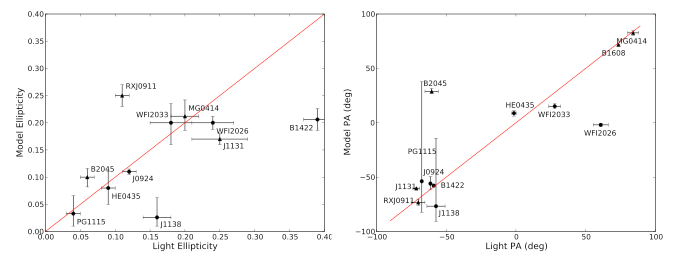Gravitational lensing is commonly used to derive the slope of the radial distribution of dark matter in galaxies. Recently, I have followed a different route, looking at the
shape of the dark matter profile and its correlation with the light distribution (Sluse et al. 2012a).

Correlations observed between the shape of the light and of the total mass distribution in 12 strongly lensed quasars (Sluse et al. 2012a).
A more unique property of gravitational lensing
is its sensitivity to the clumpy content of matter in
galaxies, allowing one to estimate the fraction of substructures (which can be made of pure dark matter or regular matter in the form of dwarf galaxies) with masses > 105 Msun in galaxies at redshfits typically z > 0.1. In my work, I developed techniques to get more robust flux ratios in lensed quasars, which are needed to estimate the amount of susbstructures (e.g. Sluse et al. 2006, 2012b, 2012c-submitted). I also search for perturbations in the lensed image
astrometry induced by these clumps of matter (Chantry, Sluse & Magain 2010, Sluse et al. 2012a).
